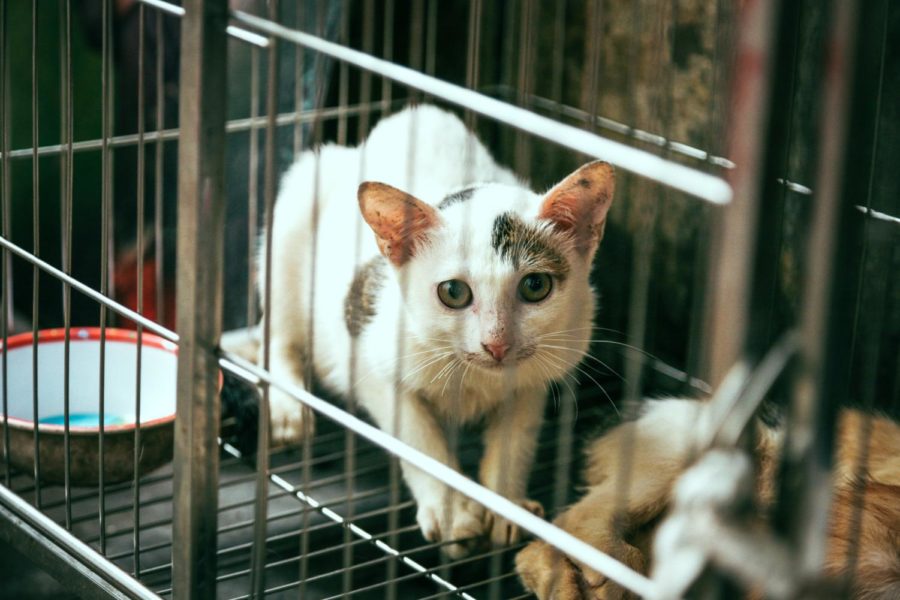Why Animal Testing Should Be Banned
2004 study from the U.S. Food and Drug Administration found that, in reality, 92 percent of experimental drugs that are safe and effective in animals fail in human clinical trials – because they are too dangerous or simply don’t work.
March 24, 2022
According to the Humane Society, more than 25 million dogs, cats, monkeys, mice, rats and other animals are forced to endure painful experiments in the US (and it is estimated that more than 115 million animals worldwide are used in laboratory experiments every year). According to the CFK, many well-known household brands such as L’Oreal, Estee Lauder, Clorox, Johnson & Johnson, all use animal testing to trial their products — and these are only the few that have been vocal about it. There are many other companies who remained silent about their animal testing policies.
Animal testing, also known as animal experimentation, refers to procedures performed on living, non-human animals — mainly used for researching and testing the effectiveness of medical procedures and products such as cosmetics, drugs, household cleaners, and food additives.
Society deems it unethical to test it in human beings first, due to the danger of harm rather than benefit, so instead, it is tested in animals first to make sure that it is safe and effective. That seems reasonable enough, but unfortunately, the cruel reality of animal testing is not so.
Animals in animal testing are burned, crippled, poisoned and abused every year, in cruel chemical, drug, food and cosmetics tests — as well as in medical training exercises and curiosity-driven medical experiments. Animals in animal testing, are deliberately sickened with toxic chemicals or infected with diseases, live in barren cages, made to inhale toxic fumes against their will, have holes drilled into their skulls, their skin burned, their spinal cords crushed, and then die brutally, and in vain, as test subjects to experimentation that might not even prove useful.
This is why animal testing should be banned — because it’s downright cruel and brutal to make these poor animals suffer through that much pain, when most of the time their deaths are in vain. Because it’s very wasteful and unreliable, but also dangerous for the humans on the recieving end.
The stress of their living situation causes some animals to develop neurotic behavior such as spinning in circles, rocking back and forth, pulling out their fur, and even biting themselves. After enduring a life of pain, loneliness, and terror, almost all of them will be brutally killed.
All these procedures performed on animals, even those classified as “mild,” have the potential to cause the animals physical as well as psychological distress and suffering. Often the procedures can cause a great deal of suffering. Most animals are killed at the end of an experiment, but some may be reused in other experiments. The Humane Society also explains that even with all their pain and suffering, humans and animals are very different, so most animal experiments often produce inaccurate or unusable results.
People that support animal testing will tell you that there is no adequate alternative to testing on a living, whole-body system and you are potentially endangering the humans involved if we scrap animal testing. But this is false. A 2004 study from the U.S. Food and Drug Administration found that, in reality, 92 percent of experimental drugs that are safe and effective in animals fail in human clinical trials – because they are too dangerous or simply don’t work.
This just renders all those poor animals to die in vain, their lives lived so full of unwanted suffering and pain, all to be wasted. There are many other instances where animal testing is not only wasteful but also unreliable. Using mice and rats to test the safety of drugs in humans is only accurate 43 percent of the time, a study by CFI found. Vioxx, a drug used to treat arthritis, was found to be safe when tested in monkeys (and five other animal species) but has been estimated to have caused around three hundred twenty thousand heart attacks and strokes, and approximately one-hundred-forty thousand deaths worldwide.
People who support the cruel, brutal testing on animals will sugarcoat the brutality of animal testing and say the animals themselves benefit from the results of animal testing, because “they are cured of sickness.” Sounds great, right? Animals get to be cured, while also benefiting humans! Win-win situation, right? Unfortunately not. In reality, humans are the ones injecting needles into healthy animals, breaking perfectly fine bone bones, inflicting pain, doing gruesome experiments on previously un-sick animals. The animal testers are the ones giving the animals the sickness in the first place, and they dare claim that the animals benefit from it?
Another thing people who support animal testing will say is that animal research is highly regulated, with laws in place to protect animals from mistreatment. But this is also incorrect. As I mentioned earlier, more than 25 million animals are horribly mistreated in US labs every year, and only 5 percent of animals used in experiments are protected by US law. The Animal Welfare Act (AWA) does not apply to rats, mice, fish, and birds, which account for 95 percent of the animals used in research. The types of animals covered by the AWA account for fewer than one million animals used in research facilities each year, which leaves millions of other animals without protection from mistreatment.
And animal testing is not the only way to test products! Many non-animal test methods can be used in place of animal testing. Not only are these non-animal tests more humane, but they also have the potential to be cheaper, faster, and more relevant to humans. One method is In Vitro testing, a variety of cell-based tests and tissue models can be used to assess the safety of drugs, chemicals, cosmetics, and consumer products.
Another alternative is Computer Modeling. Researchers have developed a wide range of sophisticated computer models that simulate human biology and how developing diseases progress. Studies show that these models can actually accurately predict the ways that new drugs will react in the human body and replace the use of animals in exploratory research and many standard drug tests.
While some of the experimentation conducted on animals today is required by law, most of it isn’t. In fact, a number of countries have already implemented bans on the testing of certain types of consumer goods on animals, such as the cosmetics-testing bans in places such as the European Union, India, Israel, New Zealand, Norway, etc.
But again, these thinking, feeling animals who are used in experiments are treated like nothing more than disposable laboratory equipment – their life value flimsy, no more than a plastic toy.
Animal testing should be banned. It’s downright cruel and brutal to make poor animals suffer through that much pain, when most of the time their deaths are in vain. Because it’s very wasteful and unreliable, but also dangerous for the humans on the receiving end, as well.








kat • May 1, 2025 at 7:11 am
It is cruel to animals for testing to be on them I agree with many people that it is cruel.
Izuchukwu Ike • Apr 27, 2025 at 3:02 pm
Animal testing should definitely be banned. Not only is it cruel to animals but it is also inaccurate and can harm humans. I do not see a point of it.
Amy Fernandez • Apr 22, 2024 at 12:35 pm
Animal testing is cruel and millions of animals are killed because of animal testing.
Ainsley • Apr 4, 2024 at 2:07 pm
animal testing needs to be banned it could hurt them
Amy Fernandez • Apr 15, 2024 at 5:24 pm
I agree with you